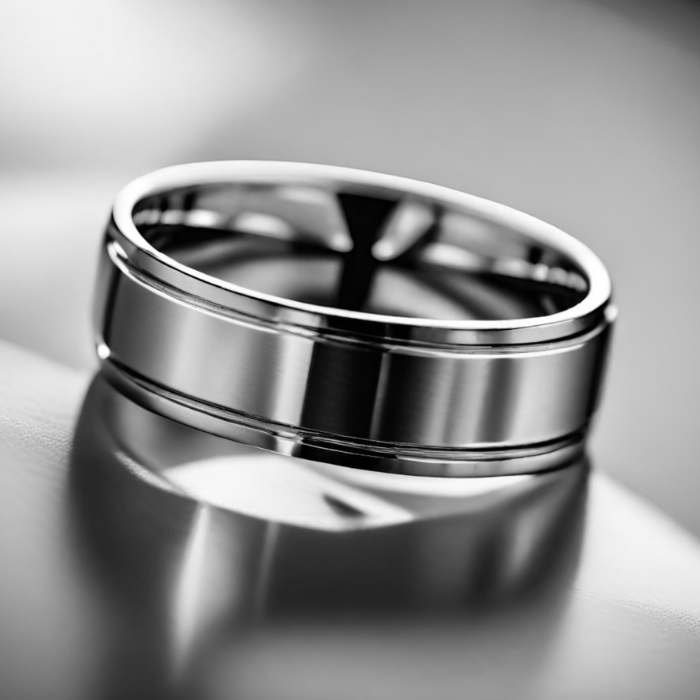
Lab diamond rings have gained significant popularity throughout the course of recent years because of their ethical obtaining and shocking appearance. One important feature of these rings, which plays a crucial job in both their plan and durability, is the utilization of claws in their setting. Lab diamond rings claws are integral to the ring’s tasteful appeal as well as guarantee that the diamond is safely placed, allowing it to beautifully sparkle. This article investigates why lab diamond rings claws are essential, how they enhance the overall look, and what you ought to know while considering them for your engagement or fashion ring.
Table of Contents
Understanding Lab Diamond Rings Claws
Lab diamond rings claws are small metal prongs or arms that protected a diamond in place inside a ring. They are typically made from materials like white gold, platinum, or other valuable metals that supplement the variety and sparkle of the lab-grown diamond. These claws are intended to hold the diamond solidly while as yet allowing the maximum amount of light to pass through, which enhances the stone’s brilliance.
The expression “claws” can in some cases be misleading because these prongs are not sharp or threatening. Instead, they are carefully crafted to grasp the edges of the diamond safely, guaranteeing that the stone stays in place without blocking its natural sparkle. The claws are essential to maintaining the structural respectability of the ring, keeping the diamond from turning out to be free or damaged.
The Job of Claws in Lab Diamond Rings
The primary reason for claws in lab diamond rings is to hold the diamond in place while giving a solid, stable setting. Without claws, the diamond wouldn’t be as expected got and could move or fall out of the ring over the long run. Lab diamond rings claws also play a job in the overall stylish plan, as they contribute to the ring’s elegance and style. Contingent upon the plan, the quantity of claws can vary, with four, six, or significantly more prongs used to get the diamond.
While the function of the claws is to keep the diamond secure, their plan is also critical to the ring’s visual appeal. In many plans, the claws are intentionally kept unpretentious to allow the diamond to take the middle of everyone’s attention, showcasing its brilliance. Notwithstanding, for the people who favor a more intricate plan, the claws can be made more noticeable, adding a component of sophistication to the ring.
Kinds of Claw Settings for Lab Diamond Rings
Lab diamond rings come in various styles, each of which uses claws in marginally various ways to achieve a special look. One of the most popular kinds of settings for lab diamonds is the solitaire setting, where a solitary diamond is held in place by four or six prongs. This classic plan allows the diamond to be the focal mark of the ring, with the claws offering a safe hold without overpowering the stone.
Another popular option is the halo setting, where smaller diamonds enclose the middle diamond, and the claws are utilized to hold both the middle stone and the smaller encompassing diamonds. The halo setting enhances the appearance of the central diamond, making it appear larger and more radiant. In this case, the claws are strategically placed to maximize the visual impact of the halo while guaranteeing that all diamonds are safely positioned.
The tension setting is another style where claws are utilized in a more minimalistic way, allowing the diamond to appear as on the off chance that it is floating between two metal bars. While this plan frequently utilizes less claws, they are positioned to get the diamond immovably in place while maintaining the illusion of suspension. This sort of setting is present day and smooth, with the claws being cautious yet essential to the overall plan.
Why Claws Are Essential for Lab Diamond Rings
Claws are critical for guaranteeing the security of your lab diamond, keeping it from turning out to be free or falling out. Lab diamonds, similar to their natural counterparts, are valuable stones that require careful handling. The claws guarantee that the diamond stays solidly in place, lessening the probability of the stone being damaged or lost during everyday wear. The right setting with very much placed claws can also shield the diamond from scratches or chipping, which is especially important for the individuals who wear their rings regularly.
Another reason claws are essential for lab diamond rings is their ability to allow maximum light to pass through the diamond. Claws typically have a small impression, meaning they don’t cover a significant part of the diamond, which enables the stone to catch and mirror light this way and that. This increases the diamond’s brilliance and sparkle, which is one of the key reasons individuals pick lab-grown diamonds. The claws work to guarantee that the diamond is positioned impeccably, showcasing its beauty and radiance from each angle.
The Advantages of Lab Diamond Rings with Claws
One of the main advantages of lab diamond rings with claws is the security they accommodate your valuable stone. Lab diamonds, while durable, can be vulnerable to being unstuck while possibly not safely set in the ring. The claws guarantee that the diamond stays in place and limits its gamble turning out to be free or falling out, giving you peace of brain. This is especially important for engagement rings, which are worn daily and exposed to various activities.
Another advantage is the style versatility that claw settings offer. Whether you’re keen on a classic solitaire setting, a cutting edge tension setting, or an ornate halo configuration, claws can be adapted to suit any style. Their minimalist or intricate plans can either feature the diamond’s natural beauty or supplement different components of the ring. The ability to tweak the quantity of claws and their plan makes lab diamond rings profoundly adaptable for those looking for a personalized look.
Step by step instructions to Pick the Right Claw Setting for Your Lab Diamond Ring
Picking the right claw setting for your lab diamond ring includes considering both the style and practicality of the plan. While settling on a claw setting, consider how frequently you plan to wear the ring. For the people who lead active ways of life or work with their hands regularly, it could be beneficial to pick a setting with additional claws or a safer plan, for example, the six-prong setting. This offers additional security for the diamond, lessening the gamble of damage or misfortune.
Additionally, consider the size and shape of your lab diamond. Round man made diamonds, for instance, frequently pair well with a four-prong setting, while larger diamonds may profit from a six-prong plan for added stability. In the event that you lean toward a more remarkable plan, you can pick a tension setting or a halo setting that features claws around the middle stone. Ultimately, the decision boils down to personal style and the degree of safety you really want.
Caring for Lab Diamond Rings with Claws
Lab diamond rings with claws require a care to guarantee that the claws remain intact and the diamond stays safely in place. Regular inspections by a professional gem specialist are prescribed to guarantee that the claws have not become free or damaged. Additionally, it’s important to be aware of the wear and tear on the ring. Avoid activities that may come down on the claws, like heavy lifting or harsh handling.
Cleaning your lab diamond ring regularly will also assist with maintaining its sparkle. A delicate cleaning solution and a delicate material can assist with eliminating soil and grime from the claws, keeping the diamond looking perfect. By taking appropriate care of your lab diamond ring, you can guarantee that it continues to sparkle for quite a long time into the future.
Conclusion: The Importance of Claws in Lab Diamond Rings
In conclusion, lab diamond rings claws play a crucial job in both the security and style of the ring. They guarantee that the diamond is safely set, allowing it to sparkle beautifully while decreasing the gamble of damage or misfortune. Whether you pick a basic solitaire plan or a more intricate halo or tension setting, the claws are essential for holding the diamond in place and maximizing its brilliance. By understanding the importance of claws in lab diamond rings, you can make an educated decision while choosing the ideal ring for yourself or a friend or family member.
